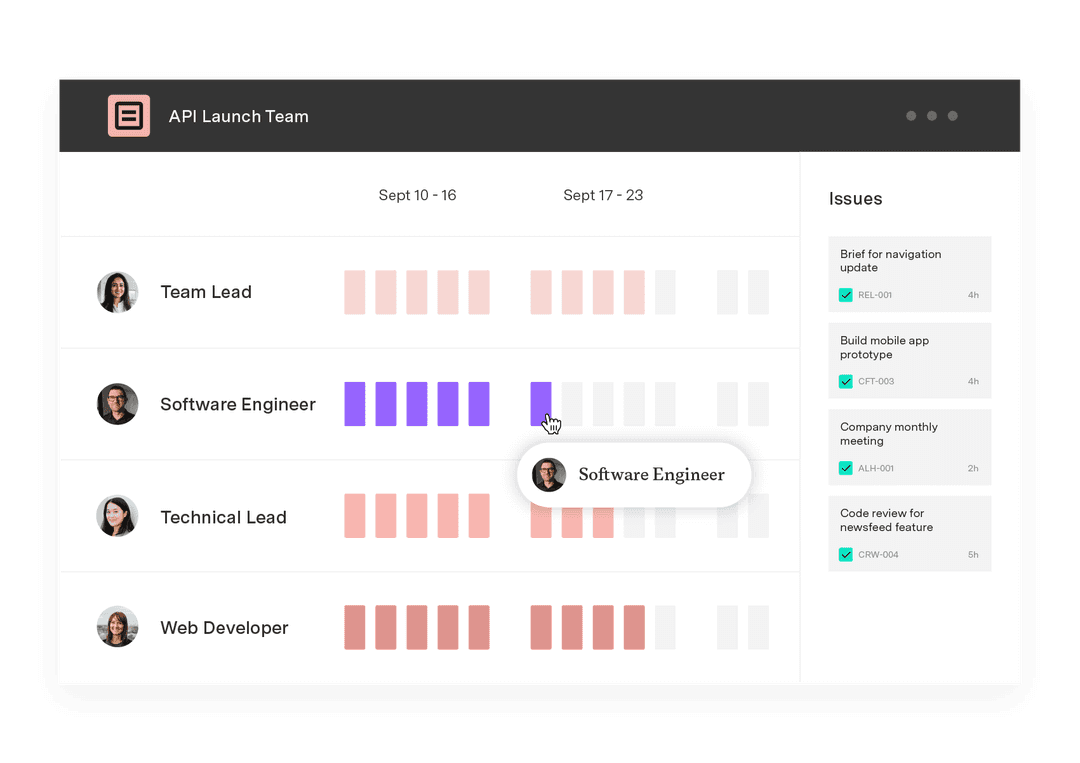A guide to different work styles (and how to identify yours)
Tempo Team
It’s rare to find a team that meshes seamlessly, with no personality conflicts or misunderstandings. Diversity is a strength, but it also poses some challenges. What should you do if your team is plagued by tension?
Every team has a unique mix of personalities, preferences, and working styles. These differences aren’t just quirks. They’re called work styles, and they have a huge impact on team success and business outcomes.
By understanding the different work styles at play, teams can improve communication and managers can reduce conflict. As a result, overall productivity receives a boost. This article explores the most common styles and how you can identify your own – and those of other team members.
What are work styles?
Work styles are behavioral and cognitive tendencies that influence how people approach tasks and interact with colleagues. Your big picture style impacts everything from your decision-making preferences to how you structure day-to-day tasks.
You can think of your work style as your ‘default settings’ at the office. Some people rely on checklists and priority-sorted spreadsheets, while others juggle projects more intuitively. You might be energized and motivated by group discussions, while your colleague may need quiet, uninterrupted time to be at their best.
Other key elements of any work style include:
Collaboration preferences: Do you prefer to problem solve and handle large projects with others or independently?
Communication habits: Do you like quick check-ins or in-depth discussions? Do you prefer working through questions over email or face-to-face?
Pace of work: Do you prefer to move quickly or take a slower, methodical approach? Do you work on one task at a time or switch frequently?
Decision-making style: Do you rely more on data and logic or intuition and big-picture vision?
Why is it important to understand your work style?
Recognizing your own tendencies makes you aware of your unique strengths and weaknesses. It helps you identify what motivates you, and discover how you can better contribute to your team.
If you’re a manager or leader, working styles are doubly important. Knowing your team’s strengths makes it much easier to assign tasks to the right people and form effective project groups.
Taking the time to evaluate working styles can also:
Improve team collaboration: When team members know each others’ styles, they can adjust how they communicate. For example, a logical, data-driven colleague may prefer detailed reports with numbers, while other teammates might contribute best via cooperative brainstorming sessions.
Reduce conflict: When people assume their approach is the only ‘right’ one, misunderstandings are common. Recognizing that colleagues simply work differently helps diffuse tension and prevents minor disagreements from escalating.
Support workplace productivity: Managers can assign work more efficiently by matching tasks to strengths. Detail-oriented employees often excel at quality checks, while idea-oriented individuals thrive on innovative and creative projects. Similarly, understanding your leaders helps you manage up effectively.
Increase job satisfaction: Employees who feel their style is respected tend to be more engaged. Instead of being forced into working methods that drain or frustrate them, they can contribute to tasks in natural and rewarding ways.
7 common work styles and what they look like
No list can capture every nuance of how individuals approach their work. However, most people have one or two big picture styles, and there’s a lot of overlap in strengths and weaknesses.
Here are seven common types of work styles:
The logical style: Logical workers rely on analysis and facts, and thrive on structure. They like clear expectations and measurable goals. Their strength lies in problem solving with data, which makes logical workers great for decision-making tasks.
The cooperative style: Cooperative or collaborative workers thrive in group settings. They’re team players who enjoy work environments that encourage brainstorming and teamwork. Collaboration helps them feel energized and inspired, and they often serve as connectors or liaisons between departments.
The expressive style: This style prioritizes creativity and enthusiasm. Expressive workers often shine in roles that require persuasion and innovation. They can also be excellent managers and project leads.
The idea-oriented style: Team members with an idea-oriented style are visionaries who thrive on brainstorming and exploring new possibilities. They excel at generating creative concepts, while identifying new opportunities and pushing teams to think outside the status quo. Their enthusiasm often sparks innovation and keeps projects fresh.
The supportive style: Supportive workers are relationship-driven. They value harmony within their team/workplace, and they make sure colleagues feel included. Their strength lies in team cohesion, and they’re often the glue that holds groups together and defuses conflicts.
The proximity style: These team members value being physically close to their colleagues. They excel in environments where quick check-ins, side conversations, and face-to-face collaboration are easy. While they can work autonomously and even remotely if needed, they feel most connected and productive in shared workspaces.
The detail-oriented style: Finally, detail-oriented workers focus on accuracy and precision, often catching errors others miss. While they may take longer to finish tasks, their work is thorough and dependable. Detailed team members excel at quality control and complex projects.
How to determine your working style
Finding your dominant work style isn’t about fitting neatly into one simplified box. It’s about noticing patterns in how you feel and work best.
You may find that you relate to a few of the styles listed above, or that your own strengths and weaknesses require a new category. What’s important is to understand what you’re good at, what motivates you, and what working environment enables you to thrive.
If you’re struggling to determine your working style, or the style of a colleague, you may want to:
Reflect on past projects: Think back to a time when you felt both productive and satisfied at work. Were you energized by collaborative workshops, or did you enjoy working alone to maximize focus? This type of reflection often reveals whether you lean toward independent or team-oriented work.
Analyze your energy levels: Pay attention to when you feel drained versus when you feel engaged. Some people light up in brainstorming sessions, but struggle with long periods of solitary focus. Others find that quiet time gives them energy, while team meetings leave them exhausted.
Ask for feedback: Colleagues and managers often see things we miss about ourselves. If you want insight into how you work best, just ask how they’d describe your approach. Maybe they see you as a calm, methodical planner, or maybe you’re the person who excels at getting everyone moving. You might also get feedback about weaknesses you’re not aware of.
Try a work style assessment: Work style assessments aren’t perfect, but they provide a structured way to think about your tendencies and become a better team player. They also offer handy language you can use to describe your style when talking with colleagues or managers.
Support diverse work styles with Tempo
Recognizing different work styles is only the first step. The real value comes from putting that knowledge into practice. By matching people to projects and encouraging collaboration where it works best, leaders can create the ideal conditions for true team synergy.
Tempo equips managers with the tools to make that possible. With Capacity Planner, you can use customizable team planning and scheduling tools to balance workloads and align strengths with responsibilities.
Then you can rely on Timesheets to track project durations, stages, costs, and overall progress. Not only does this save time and keep everyone on the same page – it also helps you assess whether team compositions are effective or need more refinement.
In turn, this builds teams where every work style is maximized. Find out how Tempo’s suite of project management tools keeps your team productive, engaged, and ready to drive growth.













































